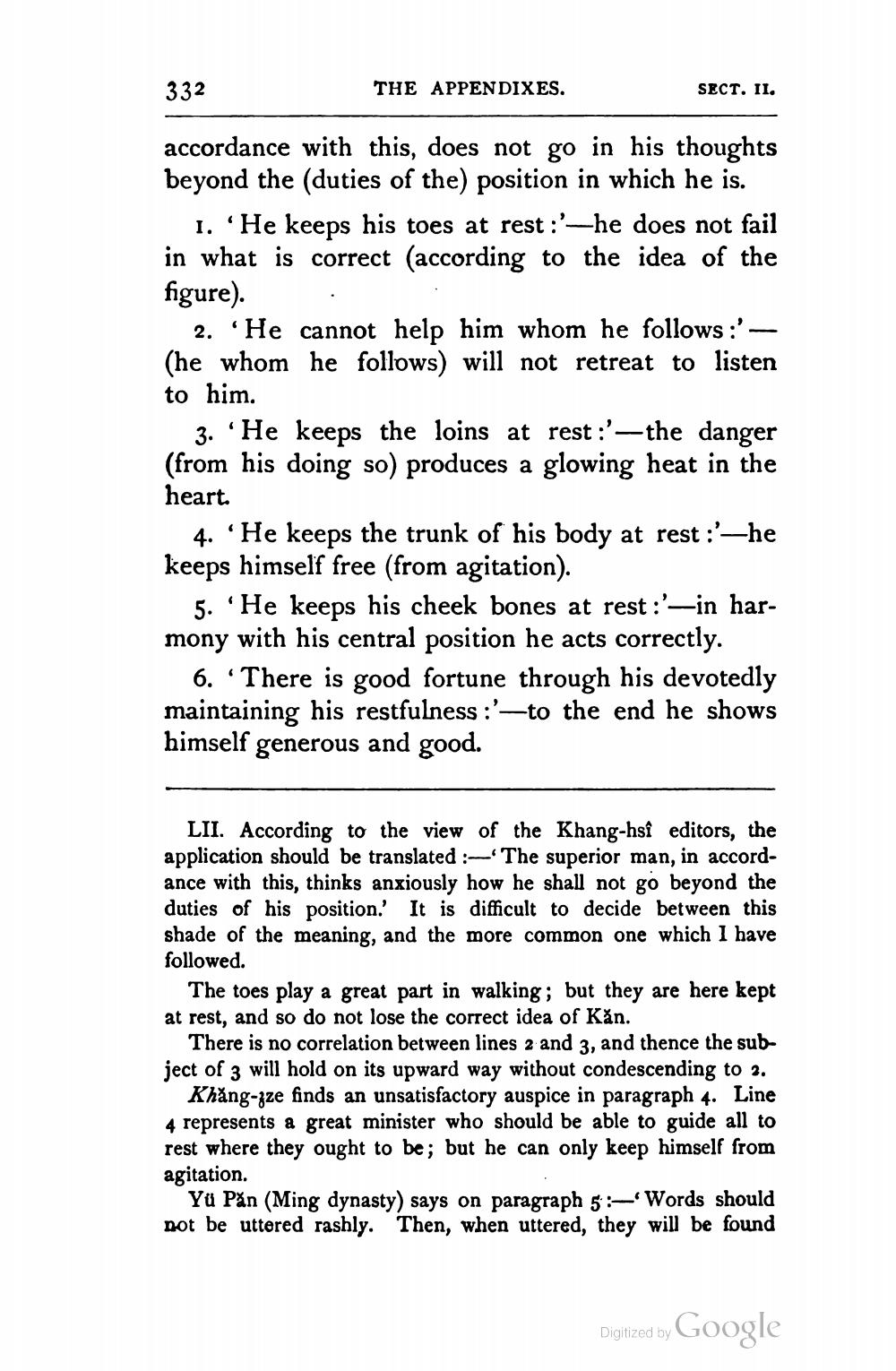________________
332
THE APPENDIXES.
SECT. II.
accordance with this, does not go in his thoughts beyond the (duties of the) position in which he is.
1. 'He keeps his toes at rest :'-he does not fail in what is correct (according to the idea of the figure).
2. He cannot help him whom he follows:' - (he whom he follows) will not retreat to listen to him.
3. 'He keeps the loins at rest :'—the danger (from his doing so) produces a glowing heat in the heart
4. He keeps the trunk of his body at rest :-he keeps himself free (from agitation).
5. 'He keeps his cheek bones at rest :'-in harmony with his central position he acts correctly.
6. There is good fortune through his devotedly maintaining his restfulness :'—to the end he shows himself generous and good.
LII. According to the view of the Khang-hsî editors, the application should be translated :- The superior man, in accordance with this, thinks anxiously how he shall not go beyond the duties of his position. It is difficult to decide between this shade of the meaning, and the more common one which I have followed.
The toes play a great part in walking; but they are here kept at rest, and so do not lose the correct idea of Kăn.
There is no correlation between lines 2 and 3, and thence the subject of 3 will hold on its upward way without condescending to 2.
Khăng-zze finds an unsatisfactory auspice in paragraph 4. Line 4 represents a great minister who should be able to guide all to rest where they ought to be; but he can only keep himself from agitation.
Yü Păn (Ming dynasty) says on paragraph 5: Words should not be uttered rashly. Then, when uttered, they will be found
Digitized by Google




